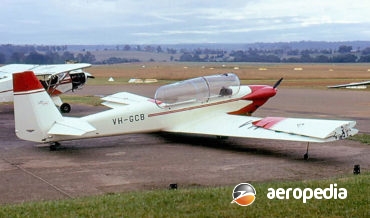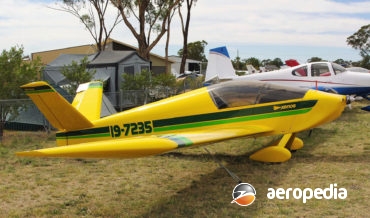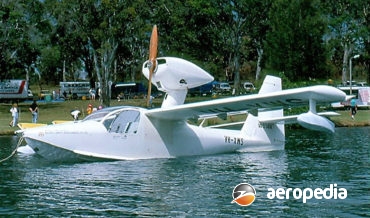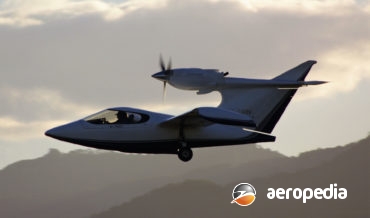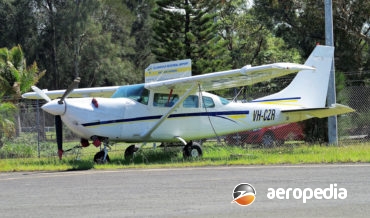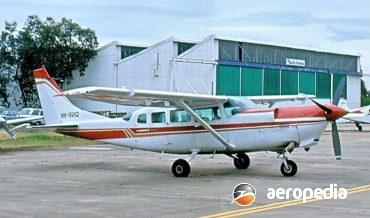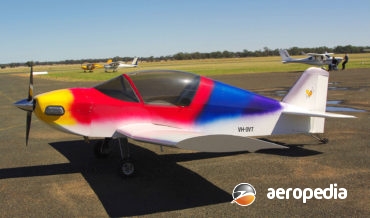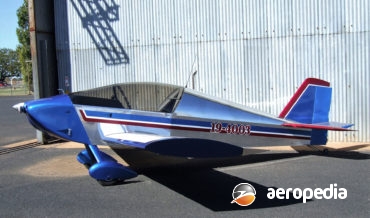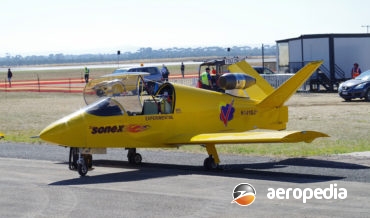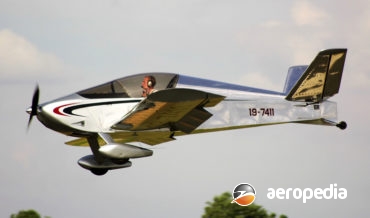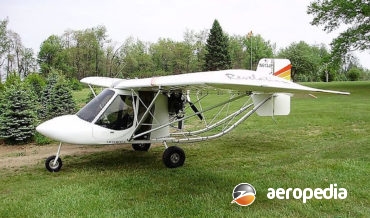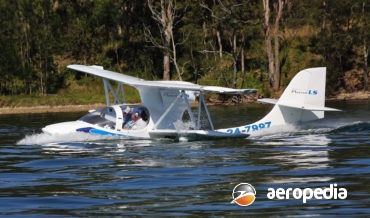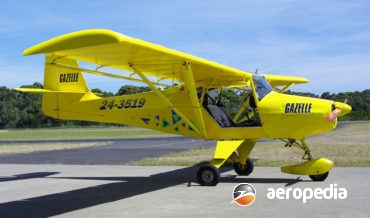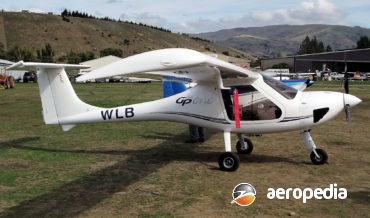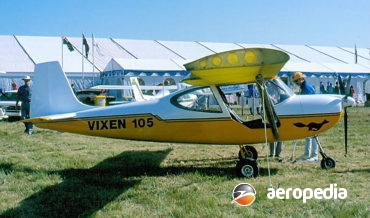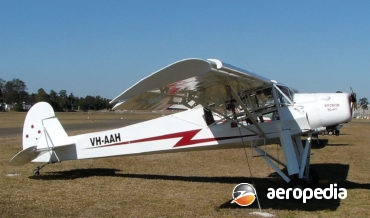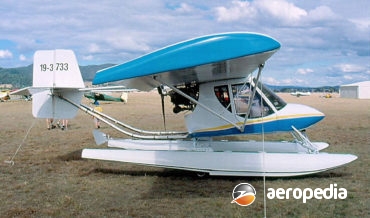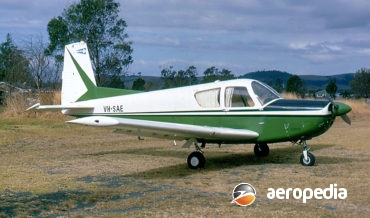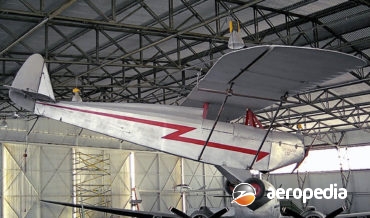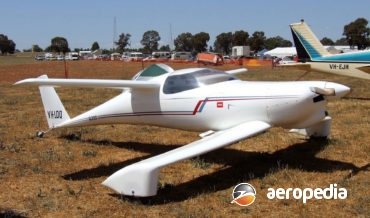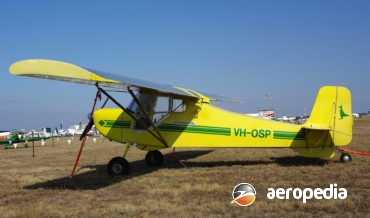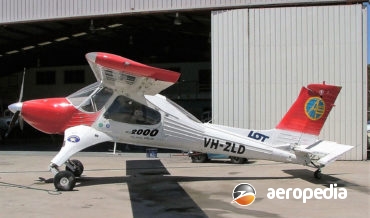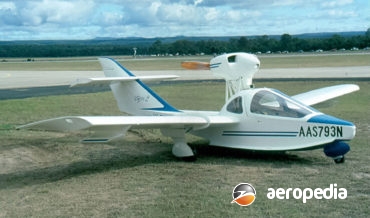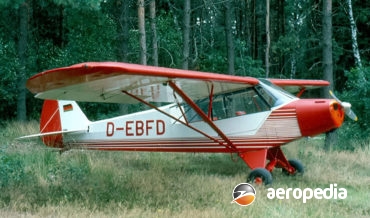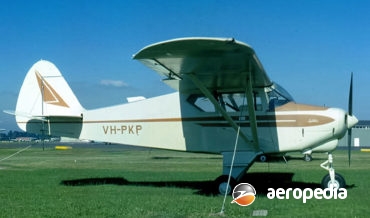All Contents
Contents
The Panther was designed by Daniel Weseman of Florida, US, a pilot and machinist who was involved in making conversions of the General Motors Corvair six-cylinder engine for installation in light aircraft.
David C. Eyre
- May 8, 2019
The Sportavia-Putzer series of aircraft was designed in Germany by Mr M Rene Fournier, the company being formed in 1966 to take over from Alpavia the manufacture of his series of light aircraft.
David C. Eyre
- May 8, 2019
Following the success of other aircraft in the Sonex range, John Monnett designed the Xenos which is aimed at bringing the cost of motor gliding to an affordable level.
David C. Eyre
- May 8, 2019
The FSRW, constructed almost entirely of fibreglass, was initially a development project of the Sydney University School of Aeronautical Engineering, in 1974.
David C. Eyre
- May 8, 2019
One of a new breed of high performance homebuilt aircraft available to the amateur constructor in kit form, the Seawind 2500 was designed by Seawind Industries of Haliburton, Ontario, Canada,the prototype (C-GFNL) flying for the first time on 23 August 1982.
David C. Eyre
- May 8, 2019
In 1985 Soloy Aviation Solutions converted a Cessna 206 to turbine power, replacing the Continental TIO-520 engine with a Rolls Royce / Allison 250 turboshaft, this engine providing in this installation 311-kw (417-shp) and gives better performance, safety and value, and since then other Cessna models including the 182 and
David C. Eyre
- May 8, 2019
Soloy Aviation Solutions has for many years been involved in converting aircraft and helicopters to turbine power and aircraft involved have included the Cessna 206, 207, 208 etc.
David C. Eyre
- May 8, 2019
The Onex is one of a series of light aircraft produced in the United States by Sonex Aircraft of Oshkosh in Wisconsin as a kit for amateur construction, the first Onex variant being flown for the first time on 27 January 2011.
David C. Eyre
- May 8, 2019
The Sonex is a light two-seat monoplane designed by John Monnett, designer of the Monnett Sonerai, Moni, and others, and was introduced in 1998.
David C. Eyre
- May 8, 2019
The SubSonex was designed by John Monnett and began as a dream in his mind for a personal sport jet that could be flown by someone with average to good pilot skills.
David C. Eyre
- May 8, 2019
The Waiex is a variant of the Sonex series of light all-metal aircraft and the main variation from the Sonex is a V-tail.
David C. Eyre
- May 8, 2019
The Revelation is a two-seat light sporting aircraft usually registered in the ultra-light category produced by Slip Stream Industries Inc in the US and was the result of deemed requirement for a two-seat training type for that part of the market.
David C. Eyre
- May 8, 2019
The CA-22 was built for ultralight regulations and development of the JAR/VLA variant produced the CA-22A and this became the first Australian-built aircraft to be certified in the Normal Category, but ultralight certification was also available.
David C. Eyre
- May 8, 2019
The Petrel is a two-seat single-engine light sporting amphibian. French engineer, Claude Tisserand, designed and developed in 1983 a small monoplane of wooden construction which was amphibious, this aircraft flying for the first time in November 1986.
David C. Eyre
- May 8, 2019
Following the success of the Kitfox in Australia, development of the series by Calair, a division of Hedaro International Pty Ltd, lead to the CA-22, the first flight of this model being made on 22 June 1990, this being certificated to CAO 101.55 standard, followed by development of JAR-VLA version
David C. Eyre
- May 8, 2019
The Aerostar series of light aircraft was designed by the late Ted Smith, who first became well known in aviation circles in the USA for designing the Aero Commander series of light business twins.
David C. Eyre
- May 8, 2019
The Skybaby is one of many ultralight aircraft designed and manufacturers in the 1980s to meet US FAR 103 Ultralight Vehicle regulations.
David C. Eyre
- May 8, 2019
The Skyleader GP One is one of a series of light aircraft produced by Skyleader Aircraft, a subsidiary of Jihlavan Airplanes, in the Czech Republic.
David C. Eyre
- May 8, 2019
The Vixen is a two-seat light sporting aircraft available in kit form from Skystar Aircraft Corp at Nampa, Idaho, this company previously being known as Denney Aerocraft.
David C. Eyre
- May 8, 2019
The Storch Moose was the last in the line of STOL aircraft produced by Storch Aviation of Beechwood, NSW, and is the largest and most powerful aircraft in the range.
David C. Eyre
- May 8, 2019
Designed and developed by Nestor Slepcev at Beechwood on the mid-north coast of New South Wales, the Storch is a three/quarter scale replica of the Luftwaffe Fieseler FI-156 Storch STOL communications aircraft.
David C. Eyre
- May 8, 2019
The Super Storch is a development of the Storch by what became Storch Aviation at Beechwood on the NSW north coast.
David C. Eyre
- May 8, 2019
The Genesis is a two-seat, side-by-side, light touring and training aircraft supplied in kit form by SlipStream Industries Inc of Davenport, Idaho.
David C. Eyre
- May 8, 2019
In 1977 a Melbourne aircraft designer, Ross Nolan, proposed an aircraft known as the Opal, the aircraft to be of moulded fibreglass, with a 67-kw (90-hp) converted Volkswagen engine, have a cruising speed of 290 km/h (180 mph) and a range of 4,630 km (2,977 miles).
David C. Eyre
- May 8, 2019
The Riviera was a light, shoulder-wing cantilever monoplane with three-seats built as an amphibian and was developed by the Italian Nardi company and flown for the first time on 4 December 1952 with a 108-kw (145-hp) Continental engine.
David C. Eyre
- May 8, 2019
Designed as a competitor to aircraft such as the Piper Cherokee 180, the prototype of the Siai-Marchetti S-205 series of touring monoplanes was flown for the first time in February 1966.
David C. Eyre
- May 8, 2019
In 1928 Mr O E Simmonds decided to design and manufacture a series of light biplanes for sale to the public, with the main design aim being to make as many parts interchangeable as possible to save costs.
David C. Eyre
- May 8, 2019
Designed by Captain A M Sisler in Minnesota in the USA, the prototype of the series, known as the SF-2 Whistler, received the “Outstanding Design Contribution” award at the 1973 Experimental Aircraft Association fly-in at Oshkosh in Wisconsin.
David C. Eyre
- May 8, 2019
The Sheppard CS-2 was one of many light homebuilt aircraft built during the halcyon days of the 1930s when, following many record attempts,much interest was shown around the world in light aircraft.
David C. Eyre
- May 8, 2019
The Scion was designed by Short Bros (Rochester and Bedford) Ltd as a light, twin-engine, cantilever monoplane for feeder-line work.
David C. Eyre
- May 8, 2019
The Q2 is a high performance two-seat canard design, a development of the Quickie aimed at the inexperienced first time amateur constructor, with only a small working area and a normal complement of tools
David C. Eyre
- May 8, 2019
The Sassy is marketed by Protech Aircraft Inc in Houston, Texas, and is a simple-to-build two-seat side-by-side amateur built aircraft with STOL performance.
David C. Eyre
- May 8, 2019
The PZL-102 Kos (Blackbird) was designed and developed by Polskie Zakladey Lotnicze (PZL), the prototype powered by a 48-kw (65-hp) Narkiewicz four-cylinder horizontally-opposed air-cooled engine flying for the first time on 21 May 1958.
David C. Eyre
- May 8, 2019
PZL was founded in 1928 and has been involved in the construction of aeroplanes for many years.
David C. Eyre
- May 8, 2019
In the 1980s Polaris Motor, an Italian company, commenced designing and producing a small flying-boat which was basically a trike with an amphibious hull.
David C. Eyre
- May 8, 2019
The Osprey was designed as a light two-seat amphibian for the amateur constructor, to be operated from smooth, enclosed areas of water and not from the open sea, for which most amphibian are designed.
David C. Eyre
- May 8, 2019
Derived from the Piaggio P-136-L2 amphibian, and employing a similar gull wing and pusher engine installation, the prototype P-166 was flown for the first time on 26 November 1957.
David C. Eyre
- May 8, 2019
In 1923 Mr. Bernard Pietenpol built a Ford Model T powered biplane and in 1928 he built and flew the prototype of the Aircamper.
David C. Eyre
- May 8, 2019
The J-5 Cruiser was a logical development of the earlier and very popular J-3 and J-4 series, designed to provide accommodation for three persons in lieu of two, this being achieved by a modest expansion of the fuselage width
David C. Eyre
- May 8, 2019
The Piper Colt was designed by the Piper Aircraft Corporation as a cheap ‘everymans aeroplane’ to sell in the United States for below $5,000 in the early 1960s.
David C. Eyre
- May 8, 2019
Recent Comments
Archives
Categories
- No categories
Categories
- No categories
Latest Posts
Newsletter


